© 2024 Qualysec.com Disclaimer Privacy Policy Terms & Conditions
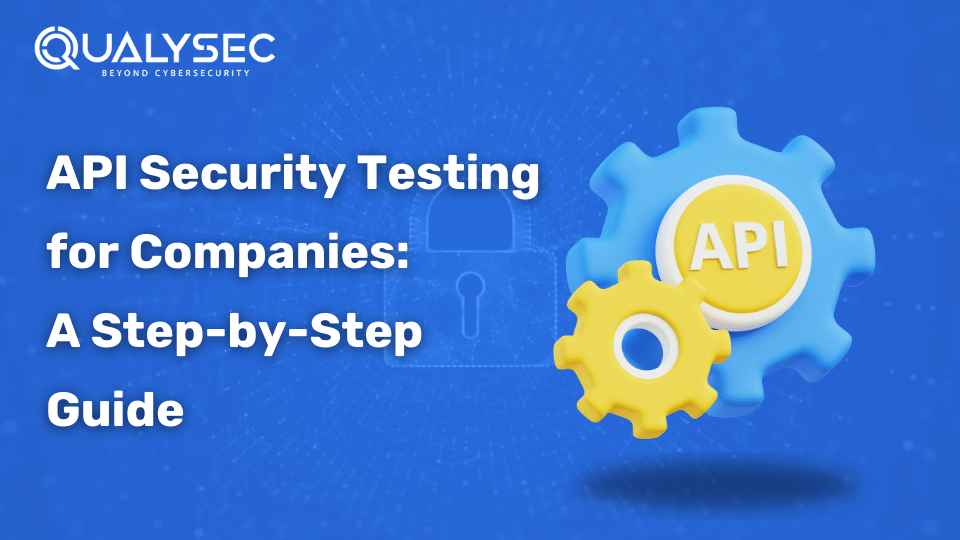
With the rise of cloud computing in business, the use of APIs (Application Programming Interfaces) has also increased. APIs allow apps to communicate and share data, making it easier for developers to create and integrate new programs. As APIs are the pipes that connect various applications and business services, they are obvious entry points for attackers.
API security testing involves checking vulnerabilities in the APIs to verify whether they are protected from cyber threats. Since APIs are the backbone of modern application architecture, their security is very important for businesses.
In this blog, you will know more about API security testing, how it is performed, and its different types. If you use APIs in any way, this blog is going to save you a lot of trouble.
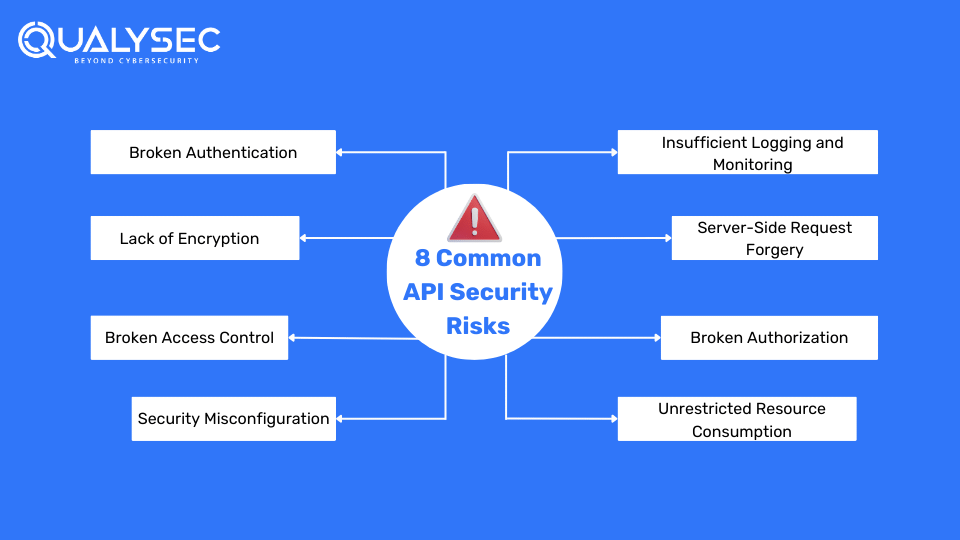
API security testing is the process of evaluating the defenses of APIs to ensure they are resistant to vulnerabilities and unauthorized access. It is also now a major part of the software development lifecycle (SDLC), where developers even test the API before they are deployed.
Businesses hire cybersecurity companies to perform API security testing to find vulnerabilities or weak points through which attackers can infiltrate the system. As a result, you can know where the security flaws lie and take the necessary steps to fix them.
API security testing is essential to enhance the overall security posture by finding and mitigating vulnerabilities in the APIs.
The fast growth of digital changes and the widespread use of APIs have led to a new era where systems and services are more connected. However, relying more on APIs also brings new security challenges.
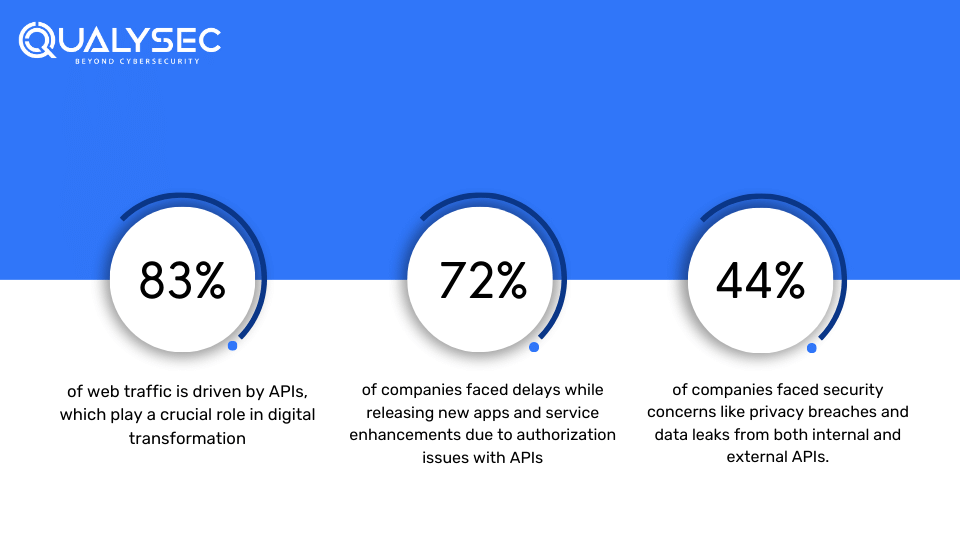
While different cybersecurity companies follow different ways to conduct security testing, the core procedure remains the same. Here are the steps involved in API security testing:
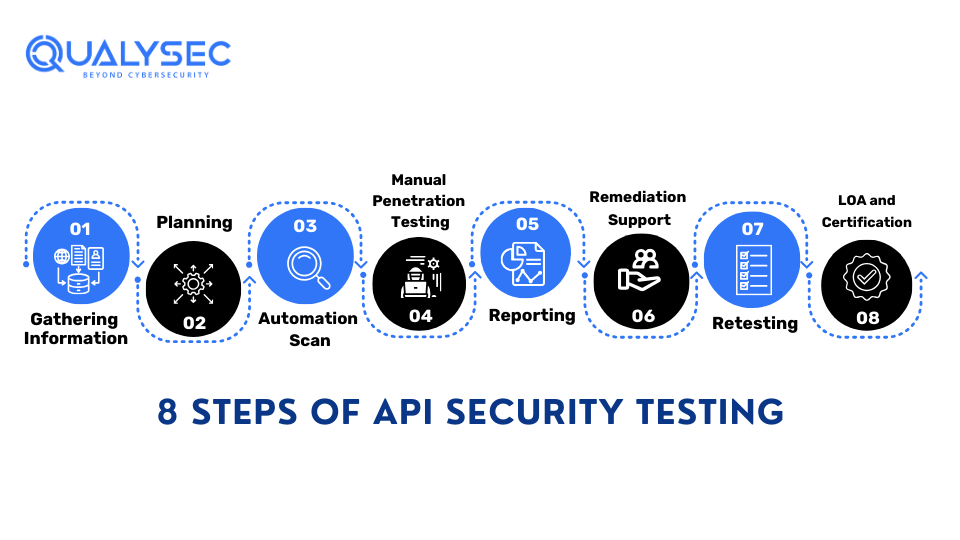
In the 1st step, the security testers gather as much information about the API environment as possible, either from the company or from publicly available web pages.
The testing company then creates a proper scope and strategy that lists the expectations from the testing process.
Then the testers use automated vulnerability scanners to find as many vulnerabilities present on the surface level of the API.
This is the step where the security testers use manual testing techniques to go deep within the API structure and find hidden vulnerabilities.
Then the testers document the vulnerabilities they found, their impact level, and remediation steps, and share them with the company.
The company then uses the remediation steps provided to fix those security flaws. If needed, the testing team will help the development team with fixing, online or over consultation calls.
After all the fixing is completed, the testers retest the API to check whether the remediation processes actually worked or not.
Finally, when all the vulnerabilities are fixed, the testing team issues a letter of attestation (LoA) and a security certificate. This certificate helps with client and compliance needs.
Want to see what a real API security testing report looks like? Just click the link below and download one in a few seconds.
When we test API security, we’re making sure that the ways we connect systems and share data are safe from attackers. The main objective of API security testing is to find and fix any weaknesses in the APIs so that hackers can’t use them.
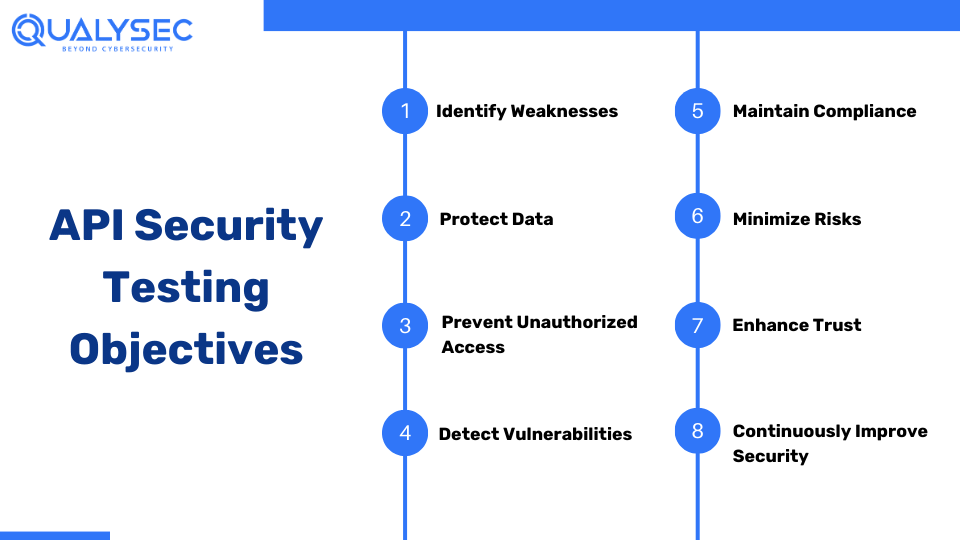
API security testing (particularly API penetration testing) is the process of finding, exploiting, and fixing vulnerabilities present in the API before real-world attackers use them for their gain. So, here are 7 types of testing involved in API security:
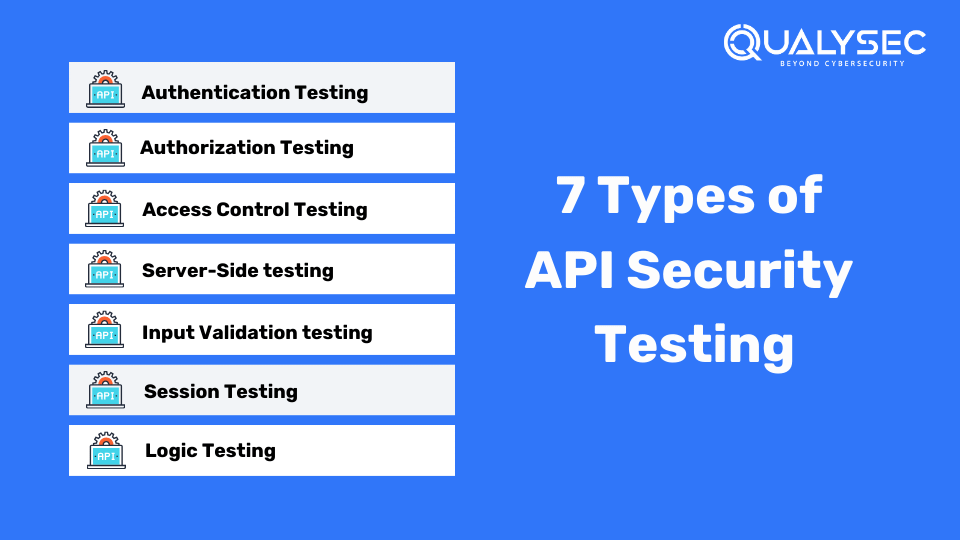
Verifying that the system accurately recognizes and confirms users’ identities, preventing unauthorized access, and keeping sensitive data safe.
Ensuring that only users have access to the resources and functionalities they’re allowed to use. It prevents unauthorized actions and safeguards sensitive information.
Checking that the system properly restricts access to sensitive data and features based on user roles and permissions.
Validating that the system properly handles and sanitizes user inputs to prevent security vulnerabilities like injection attacks.
Assessing the security of the server components and backend infrastructure to prevent unauthorized access and data breaches.
Confirming that user sessions are securely managed and terminated after a period of inactivity to prevent session hijacking.
Verifying that the system’s logic and business rules are implemented correctly to prevent unexpected behaviors and security vulnerabilities.
Want to secure your APIs from cyberattacks? Qualysec Technologies offers hybrid penetration testing services that include all the above-mentioned testing procedures. Secure your APIs and your business from security risks at once. Schedule a meeting now!
Conclusion
APIs are the medium through which applications communicate and share data, streamline development, and integrate business operations. However, these abilities have made them prone to various cyberattacks. API security testing (especially penetration testing) is a critical process that involves identifying and rectifying vulnerabilities within APIs to safeguard against cyber threats.
With cyber threats on the rise and the impact of cyberattacks increasing every year, it is important to find the right API security testing provider. Check whether the testing provider uses manual techniques and offers retesting options, as these are rare but effective steps.
Want to secure your APIs and your business from evolving cyber threats? Choose Qualysec as your security testing partner!
A: The API security process refers to finding, exploiting, and mitigating vulnerabilities present in an API. Additionally, it is essential to protect the sensitive data present in the API.
A: Measure security in API by conducting penetration testing. This is because API pen testing reveals the weak points in the API architecture that attackers can exploit to gain unauthorized access.
A: A cybersecurity company or a third-party penetration testing company performs API security testing. Moreover, they have certified ethical hackers who know all the tools and techniques to find hidden vulnerabilities.
A: Benefits of API security testing include:





Plot No:687, Near Basudev Wood Road,
Saheed Nagar, Odisha, India, 751007
No: 72, OJone India, Service Rd, LRDE Layout, Doddanekundi, India,560037
© 2024 Qualysec.com Disclaimer Privacy Policy Terms & Conditions


No: 72, OJone India, Service Rd, LRDE Layout, Doddanekundi, India,560037
© 2024 Qualysec.com Disclaimer Privacy Policy Terms & Conditions